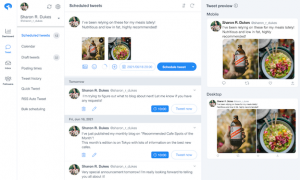
We talked before about where you can find all kinds of blog post ideas, and about how you can use Evernote to track them all. And it’s a great method for making sure that you capture those ideas and are able to come back to them at any time to flesh them out.
But there’s a problem.
After a while, you will begin to accumulate a growing number of blog post ideas that, frankly, aren’t any good.
Maybe they were great at the time, but due to events and circumstances (or other blog posts), they’re just not worthy any more.
Or maybe, if we’re being honest, we realize that some of them just weren’t that hot to begin with.
What do you do with all of these so-so blog post ideas?
Well, don’t delete them. At least, I don’t think you should. Instead, what I want to do is get them out of my main blogging ideas list so that they’re no longer top of mind and in my face. But I still want to keep them around, particularly if I went so far as to begin writing, since you never know when some new insight might make that old idea good and fresh once more.
So, instead of deleting old blog post ideas, I move them. For me, since I’m using Evernote, that’s as easy as choosing a new Notebook and clicking Move. I have an Archive notebook specifically for this purpose. I’ve got blog post ideas in there that I just don’t feel like writing about, or simply never panned out. I’ve also got partial and even whole blog posts there that will likely never see the light of day.
And that’s OK.
We don’t have to pursue every blog post idea, and we don’t have to publish every blog post. And the more you write and come up with ideas, the less of an issue this will be.
A couple of years ago I took a trip with my in-laws to Chicago for Memorial Day weekend. I knew that I would have 4 – 5 hours in the minivan, and was really looking forward to seeing what I could produce for my blog during that trip.
And it started out great.
I had come up with a couple of topics that I thought would be grand, and wrote some excellent blog posts. But then, about halfway there, I stumbled a bit.
You see, I’d come up with what I thought would be a brilliant analogy between building a blog and building a castle. I thought I would be able to pick several aspects of castle building and compare them to growing your blog, one article at a time. But while I was very familiar with castle building, I lacked specific knowledge and my research failed to come up with real examples that I could use to support my analogy. After a couple of hours, I had some content and a loose outline, but it was disjointed and incomplete.
The rest of the weekend went as planned, so my return to this article was delayed for some time. And by then, all of the passion and interest for it were gone. Sapped out of me by my failure to successfully Google historical truths about medieval castle construction.
But worse than that wasted time was the fact that every time I opened my Evernote notebook and began reviewing my available blog post ideas, that joker of a post laughed at me. It challenged me to renew my quest and each time, I galloped in the opposite direction.
Making the decision to move that post into my archive and forget about it was liberating, to say the least. I still think of it, but now it’s quite honestly a teaching tool. There are other posts like it which I won’t deign to mention, but they’ve served their purpose.
Maybe those blog post ideas were never destined to be published at all, but instead lived simply to help me focus on the posts and writing that really matter.
Regardless, my advice to you is to be ruthless with your growing list of blog post ideas. It’s great to brainstorm, but at the same time, that list must be reasonable in size to be able to use it to inspire a writing session. And it must be filled with actionable notes, worthy blog post ideas.
Digital & Social Articles on Business 2 Community(81)







